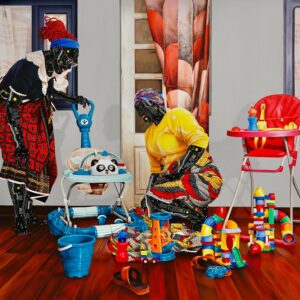Mixed media painting offers a world of possibilities for artists seeking to expand their creative horizons and push the boundaries of traditional techniques. By combining different types of paint, artists can create rich textures, striking visual contrasts, and innovative compositions that breathe new life into their work.
If you’re looking to explore the exciting world of mixed-media painting, this article will explore some practical tips and inspiration. It’s not your usual simple art project, but you get the space to really let your creativity run loose.

Understanding Mixed Media Painting
At its core, mixed media painting is about freedom of expression. It involves using a combination of materials and techniques to produce artwork that moves beyond the limitations of a single medium. By blending different types of paints, artists can experiment and achieve effects that make the most visual impact.
For example, the elegance of watercolours can be enhanced by the boldness of acrylics, while slow-drying oils can be used to layer and blend to create depth. The interaction between these paints can lead to unexpected outcomes, making mixed media a playground for innovation.
Choosing Your Paints
Each paint type has its own unique properties that influence how they interact with one another and the outcome.
Watercolours: Known for their transparency and fluidity, watercolours are often used as a base layer in mixed media paintings. They can be easily blended and layered with other paints to create subtle effects.
Acrylics: Acrylic paints are versatile and offer a wide range of effects, from opaque to transparent. They dry quickly, can easily be removed, and can be used in various techniques, including layering, glazing, and impasto.
Oils: Oils are known for their richness, depth, and slow drying time. They are ideal for creating detailed and textured surfaces.
Before you start randomly combining these mediums, you need to consider whether they’re compatible. Some may not mix well or react differently, so experimentation before application is important to achieve your desired effects.
Techniques for Combining Paints
There are several techniques that artists can use to combine paints in mixed-media paintings. Here are a few to get you started:
Layering: Apply one layer of paint on top of another, allowing the previous layer to dry completely before adding the next. This technique can create complexity and texture.
Wet-on-Wet: Apply wet paint on top of wet paint to create soft blends and transitions. This technique is particularly effective with watercolours.
Resist: Create a resist pattern using a masking fluid or tape before applying paint. The resist will prevent the paint from adhering to the protected areas, creating interesting effects.
Experimental Approaches
Mixed media painting is as much about experimentation as it is about technique. You’re encouraged to explore unconventional combinations and application methods to discover your next masterpiece.






